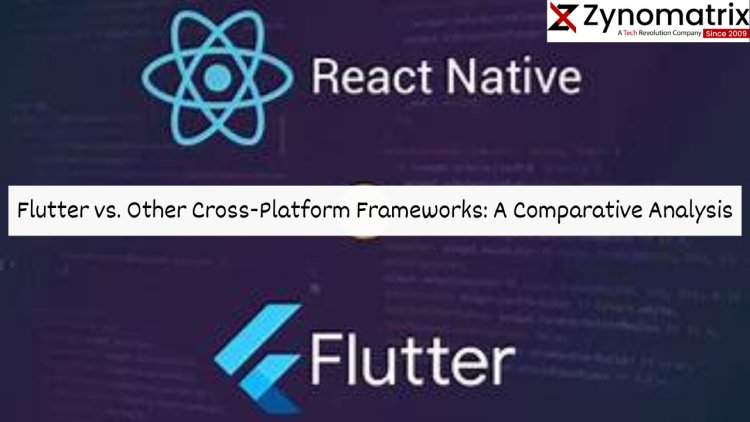Flutter vs. Other Cross-Platform Frameworks: A Comparative Analysis
This blog post serves as a detailed comparative analysis of Flutter against other leading cross-platform frameworks. It delves into various aspects such as performance, development speed, community support, UI components, native features integration, and ecosystem support. Each framework is scrutinized in terms of its strengths, weaknesses, and suitability for different project requirements. By the end, readers will gain a comprehensive understanding to make informed decisions regarding the selection of a cross-platform framework.

Introduction:
The realm of cross-platform mobile app development offers a myriad of frameworks, each promising efficiency, speed, and native-like experiences. Among these, Flutter stands out as a contender, boasting a rich set of features and a growing community. This blog aims to conduct a comprehensive comparative analysis, pitting Flutter against other prominent cross-platform frameworks like React Native, Xamarin, and Ionic. Through this analysis, we aim to assist developers in making informed decisions when choosing the ideal framework for their projects.
In the ever-evolving landscape of cross-platform mobile app development, selecting the right framework is crucial. This comprehensive analysis aims to dissect and compare Flutter with other prominent frameworks, including React Native, Xamarin, and Ionic, shedding light on their respective strengths, weaknesses, and how they stack up against each other.
We'll begin by examining Flutter, Google's UI toolkit known for its expressive UI, fast development cycles, and single codebase for multiple platforms. We'll scrutinize its performance, widget-based architecture, and seamless integration with native features, highlighting its advantages and areas where it excels.
Moving forward, we'll delve into React Native, a JavaScript-based framework backed by Facebook, which emphasizes a "learn once, write anywhere" philosophy. We'll explore its flexibility, vast community support, and how it harnesses native components for a native-like experience.
Our analysis progresses to Xamarin, Microsoft's framework that uses C# and .NET, allowing developers to create cross-platform applications. We'll evaluate its strengths in leveraging the Microsoft ecosystem and its native-like performance.
Additionally, we'll discuss Ionic, an HTML5-based framework that utilizes web technologies. We'll analyze its simplicity, ease of learning, and how it enables rapid development, albeit with certain trade-offs in performance and native integration.
By comparing these frameworks in terms of performance, development speed, community support, native integration, and ecosystem, readers will gain valuable insights to guide their framework selection process, considering factors aligned with their project requirements and long-term objectives.
Ultimately, this analysis aims to equip developers and decision-makers with a comprehensive understanding of the strengths and limitations of each framework, aiding them in making informed choices when embarking on cross-platform app development endeavors.
What's Your Reaction?





















